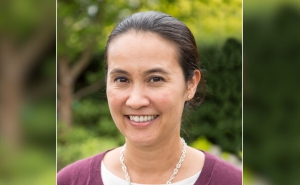Breast Cancer Patients Weigh In On Addressing Financial Burdens
Patients offer approaches to counter financial challenges of breast cancer and lymphedema
A qualitative study led by researchers at the Johns Hopkins Bloomberg School of Public Health yielded nine patient-driven recommendations across circumstances that include changes to insurance, supportive services and financial assistance to reduce long-term, breast cancer-related economic burden.
The study appears online March 6 in the journal Cancer.
U.S. breast cancer patients experience considerable economic burdens compared with those who have other types of cancer. The financial burdens are often exacerbated for patients who are managing treatment side effects, particularly breast cancer-related lymphedema, swelling of the arms or torso commonly caused by the removal of the lymph nodes during breast cancer surgery.
Over 250,000 new breast cancer cases are diagnosed each year in the U.S. Lymphedema affects nearly 35 percent of U.S. breast cancer survivors, and results in an estimated $14,877 in out-of-pocket costs in the first two years of a diagnosis for patients who develop lymphedema. Previous research suggests that 10 years post-diagnosis, breast cancer survivors with lymphedema have over double the health care costs as those not affected by lymphedema.
“No one should have to make a choice between their health and their money. Yet breast cancer survivors face incredibly high prices that can lead to severe financial hardships, even bankruptcy,” says lead author Lorraine T. Dean, ScD, assistant professor in the Bloomberg School’s Department of Epidemiology. “These recommendations offer ways to adapt a range of policies and practices that would make it more likely that breast cancer survivors can afford and attain the care they need.”
Previous studies of breast cancer patients focused on provider and insurer perspectives on reducing costs, but not the patient, notes Dean. “This study offered breast cancer survivors a voice to tell us what they think should be done to make their lives better,” says Dean.
For the study, interviews were conducted with 40 long-term breast cancer survivors from New Jersey and Pennsylvania in 2015. Participants were chosen to ensure a range of ages, lifestyles and severity of lymphedema. Of the 40 participants, 24 had lymphedema. The interviews were designed to better understand the financial problems participants faced after cancer, what types of issues they may have had with insurers, who they asked for help and what they thought should happen so that future breast cancer survivors could avoid high costs.
The interviewees offered nine actionable recommendations:
- Provide assistance with understanding what is covered under insurance and how to navigate changes when switching to a new insurance provider
- Ensure high-quality insurance that covers required and elective cancer services with low co-pays, premiums and deductibles
- Expand insurance coverage for lymphedema-specific supplies and lymphedema management, including long-term physical therapy and complementary and alternative medical treatments
- Address psychosocial costs by expanding support groups and buddy services
- Expand the availability of home health care services after cancer treatment
- Provide domestic assistance with household chores, child care and transportation
- Expand eligibility for financial aid and social services to those who are not in poverty
- Provide financial counseling or navigation throughout the diagnosis and treatment process
- Expand policies that protect employment and medical leave to offer more acceptable leave time
Previous recommendations included affordable insurance, prompt information on costs and access to financial navigation and peer support. In this study, recommendations include institutional changes and policies that patients see as setting or driving costs.
Patient-driven recommendations to keep insurance costs low have been criticized for potentially driving up costs for insurers. As a counter argument, the authors offer an example: In one state, expanding coverage for lymphedema services and treatment lowered patient out-of-pocket costs and lymphedema-related hospitalizations, while having a less than 0.1 percent impact on costs for insurance claims and less than a 0.2 percent impact on insurance premiums after 10 years.
Several states (California, Louisiana, Maryland, North Carolina and Virginia) have passed legislation that expands lymphedema treatment coverage under existing insurance. Congress has considered, but not yet passed, legislation that would do the same across the nation.
Survey participants offered several ideas for changes to private business services and nonprofits. For example, mortgage deferment services, which are currently used for other reasons besides health, could be used to reduce expenses that could then be used for cancer treatment.
While many nonprofits currently have charitable assistance programs, study participants suggested that eligibility for assistance be determined by whether or not the patient has access to additional resources, rather than on poverty guidelines. Additionally, physicians and health providers could make referrals for financial counseling services during the course of care.
The researchers suggest that without changes, the out-of-pocket costs will continue to pose a challenge for the growing number of breast cancer survivors in the U.S.
“Patient Recommendations for Reducing Long-Lasting Economic Burden After Breast Cancer” was written by Lorraine T. Dean, Shadiya L. Moss, Sarah I. Rollinson, Livia Frasso Jaramillo, Raheem J. Paxton, Jill T. Owczarzak
The study was supported by the National Cancer Institute (K01CA184288), the National Institute of Mental Health (R25MH083620), the Johns Hopkins University Center for AIDS Research (P30AI094189), the Sidney Kimmel Cancer Center (P30CA006973) and the National Institute on Drug Abuse (T32DA031099)
# # #
Media contacts: Jonathan Eichberger at 410-502-5494 or je@jhu.edu and Barbara Benham at 410-614-6029 or bbenham1@jhu.edu.





